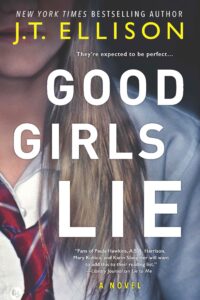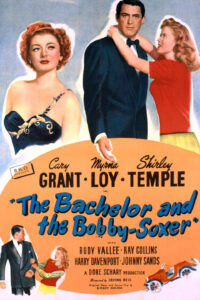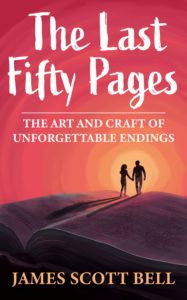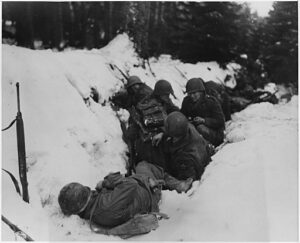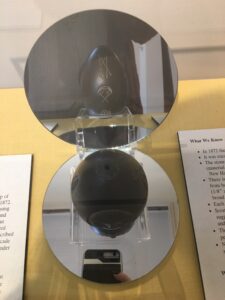by Debbie Burke
@burke_writer
Please welcome today’s Brave Author with a submission titled Hell Hath No Fury. Take a look then we’ll discuss it.

Photo credit: Fernando Aguilar, Unsplash
A DROP OF BLOOD CLUNG PRECARIOUSLY to the tip of the chef’s knife. On the fluffy white carpet of Madeline Hawthorne’s bedroom, a nasty red stain was forming. The woman gripping the knife breathed in staccato gasps; the muscles in her arm twitching after her recent exertion. Madeline lay on her stomach on the king-sized bed, wearing a silver silk nightgown with two ragged gashes in its back. Blood welled up from the wounds and ran down her side onto the satin sheet. Madeline groaned and moved her left arm.
“I said die, bitch!”
The knife sliced into Madeline’s back five more times in quick succession. Blood spatter covered the woman’s face and arms as well as her blouse. She was petite, but the muscles in her arms and shoulders were well-defined, honed by hours in the gym and the dance studio. Her calves, visible below her dark skirt were lithe and slender. She tensed for another lunge, but there was no need. She stood over the dead woman while her pulse steadied and her breathing slowed to normal. A dark pool had formed on the bed and ran in two thin rivulets off the edge of the mattress and down onto the stained carpet. After a few minutes of motionlessness, she calmly laid the knife down on a bloodless space near the foot of the bed and wiped the handle with a portion of the comforter, leaving bloody streaks. Then she reached down and removed her shoes, which had mostly avoided the flying blood. She carefully walked to the bathroom and set the shoes down on the floor, then walked around the bed, not stepping in the obvious patches of blood, until she reached a closet door. She opened it and went inside, then reached up to the shelf over a row of dark men’s business suits and removed a wooden case.
John had shown her the box once, after they had sex in his bed while his bitch wife was away for the weekend visiting her mother. He was unnaturally proud of his Colt Python .357 Magnum with the 4-inch barrel. She removed six bullets from a cardboard box lying next to the gun inside its case and loaded each of the revolving chambers, then took the gun back to the bathroom. She sat down on the edge of the marble bathtub to wait.
~~~
The title Hell Hath No Fury makes a great first impression. The familiar phrase is commonly attributed to Shakespeare. But the source is actually a 1697 play, The Mourning Bride by William Congreve.
Here’s the original version:
“Heav’n has no rage, like love to hatred turn’d,/Nor Hell a fury, like a woman scorn’d.”
No matter who said it, the quote fulfills requirements of a compelling title for a murder mystery. A female who’s suffered betrayal and rejection is consumed with passionate vengeance. Since titles can’t be copyrighted, Hell Hath No Fury has been used before. I suggest the Brave Author do a net search to find other books with that name and how recently they were published. If it’s not overdone, it’s an excellent choice for a murder mystery.
Now to deconstruct the first page.
At TKZ, we stress the importance of hooking the reader with action or a disturbance. Today’s first page kicks off with a gruesome stabbing, immediately followed by the promise of further violence as killer lies in wait with a gun for her next victim. The Brave Author sets up a tense situation that pulls the reader into the story in media res. Well done!
Let’s get into specific details:
Point of view – Keeping the killer’s identity secret is standard for mysteries.To accomplish this, the Brave Author starts in omniscient POV where the events unfold like a movie. The killer is described by an unseen narrator. The reader knows what she looks like but not who she is. Except for her pulse steadying, the reader is not inside the character until the last paragraph, when the POV shifts to her thoughts.
The risk is the reader isn’t yet invested in the character therefore may not read further to learn what happens to her. This is the eternal balancing act for authors. How do you start with action but, at the same time, make the characters fascinating enough for the reader to turn the page?
Using deep POV, the author might go inside the killer’s head sooner to share her visceral reaction as she plunges the knife, feels the resistance of Madeline’s muscles against the blade and the warm blood spatter on her face, as well as her rage against her romantic rival. BUT, that technique takes a chance of exceeding the reader’s gore tolerance.
Personally, I don’t mind the camera-eye POV in the first three paragraphs. It’s gory but doesn’t sicken me enough to stop reading. But that’s only one person’s opinion.
The fourth paragraph hints at the killer’s motives. At first blush, the stabbing appears to be a crime of passion by a jealous other woman. Then it grows more sinister when the killer waits to ambush John. Will she succeed with a second murder? The reader turns the page to find out.
Analysis of the craft details:
The Brave Author uses a number of unnecessary adjectives and adverbs. Strong verbs and vivid nouns paint the picture. Modifiers simply dilute the impact.
A DROP OF BLOOD CLUNG PRECARIOUSLY to the tip of the chef’s knife. Clung is a strong verb that implies precarious so you don’t need the adverb.
The chef’s knife is specific but also a bit misleading. For a moment, I thought the chef was a character rather than an adjective to describe the type of weapon. Suggest you delete chef’s to avoid confusion or use a more generic term like butcher knife.
…a nasty red stain was forming. Blood by itself evokes a strong reaction in readers so nasty is unnecessary.
The knife sliced into Madeline’s back five more times in quick succession. Sliced doesn’t accurately describe the normal movement in a knife attack. Slashed, plunged, stabbed are better verbs.
Blood spatter covered the woman’s face and arms as well as her blouse. Confusing because you refer to Madeline in the previous sentence then use “the woman” in the next. It’s not clear right away that the woman is not Madeline. Better to say: Blood spatter covered the attacker’s face and arms as well as her blouse. More changes to this sentence in a minute.
Extra credit for using the correct terminology: spatter rather than splatter.
…thin rivulets. A rivulet is thin by definition. A specific noun doesn’t need to be modified.
…stained carpet. With the vivid description of blood spatter and dripping blood, the reader already assumes the carpet is stained without being told.
After a few minutes of motionlessness, she calmly laid the knife down. Calmly contradicts the anger and passion the murderer shows with repeated stabbing. Rewrite to clarify.
She carefully walked to the bathroom and set the shoes down on the floor, then walked around the bed, not stepping in the obvious patches of blood, until she reached a closet door.
Suggest you replace carefully walked with tiptoed.
Delete obvious. Patches of blood are visible, therefore obvious.
Is the following action unnecessary? The killer removes her shoes, goes to the bathroom, and sets them on the floor. She returns to the bedroom to get the gun from the closet then goes back into the bathroom to wait. Is the first trip needed? Seems like wasted action that doesn’t add to the story.
Since the killer is covered with blood, a normal reaction might be to immediately wash her hands and face, suggesting a Lady Macbeth conscience. However, if she ignores the sticky spatter, that cues something entirely different about her. I suggest you exploit this opportunity to show more of her personality.
Overwriting – Tighten the prose and delete unnecessary words. Here’s some line editing:
A DROP OF BLOOD CLUNG PRECARIOUSLY to the tip of the chef’s knife. A red stain pooled on the fluffy white carpet of Madeline Hawthorne’s bedroom, a nasty red stain was forming. The woman gripping the knife breathed in staccato gasps; [replace semicolon with a period]. The muscles in her arm twitcheding after her recent from exertion.
[new paragraph] Madeline lay on her stomach on the king-sized bed, wearing a silver silk nightgown with two ragged gashes in its the back of her silver silk nightgown. Blood welled up from the wounds and ran down her ribcage side onto the satin sheet. Madeline groaned and moved her left arm.
“I said die, bitch!”
The knife sliced plunged into Madeline’s back five more times in quick succession. Blood spatters covered the attacker’s face, arms, and blouse. covered the woman’s face and arms as well as her blouse. She The woman was petite, but the with well-defined muscles in her arms and shoulders were well-defined, honed by hours in the gym and the dance studio. Her calves, visible below her dark skirt [add comma], were lithe and slender. She tensed for another lunge, but there was no need.
[new paragraph] She stood over the dead woman, knife hanging at her side, and breathed deeply while her pulse steadied and her breathing slowed to normal. A dark pool had formed spread on the mattress bed and ran in two thin rivulets off the edge of the mattress and down onto the stained carpet. When her pulse steadied, After a few minutes of motionlessness, she calmly laid the knife down set the knife down in a clean area at the foot of the bed. She wiped the handle with a corner of the comforter, . on a bloodless space near the foot of the bed and wiped the handle with a portion of the comforter, leaving bloody streaks. Then she reached down and removed her shoes, which had mostly avoided the flying blood. She tiptoed carefully walked to the bathroom and set the shoes down on the floor. then walked around the bed, not stepping in the obvious patches of blood, until she reached a closet door. She opened it and went inside, then Avoiding patches of blood, she walked around the bed to the closet. Inside, she reached up to the shelf over above a row of dark men’s dark business suits and removed a wooden case.
John had shown her the box once, after they had sex in his bed while his bitch wife was away for the weekend visiting her mother. He was unnaturally proud of his Colt Python .357 Magnum with the 4-inch barrel. She opened the case to reveal the gun and a cardboard box of ammunition beside it. She removed six bullets from a cardboard box lying next to the gun inside its case and loaded each of the revolving chambers. Gun Revolver in hand, she returned then took the gun back to the bathroom.
[new paragraph] She sat down on the edge of the marble bathtub to wait.
~~~
Overall, this first page has action, tension, and conflict with a promise of more to come. With a little line editing, this works well at drawing the reader to turn the page. Well done, Brave Author, and thanks for submitting.
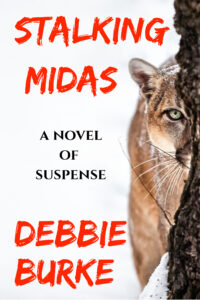
As an aside, my recent thriller Stalking Midas starts with a murder, too. The killer, also female, is immediately identified. The story question is not “Whodunit?” but rather “Will she get away with it?” Please check out the Look Inside feature at this link and let me know what you think.
TKZers, what are your opinions about starting a book with a murder on the first page?
Do you have suggestions and feedback for our brave author?
Warmest holiday wishes to everyone in the TKZ family. I’m honored to be a part of this creative, supportive community. Looking forward to seeing you in the New Year!
 “Shouldn’t have sent them down there in suits,” Sawyer muttered under her breath. “I told them we needed that fourth minisub.”
“Shouldn’t have sent them down there in suits,” Sawyer muttered under her breath. “I told them we needed that fourth minisub.”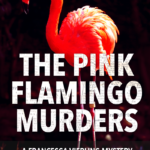 Can you kill someone with a pink plastic flamingo? Read The Pink Flamingo Murders and find out. Win the new e-book version by clicking Contests at www.elaineviets.com
Can you kill someone with a pink plastic flamingo? Read The Pink Flamingo Murders and find out. Win the new e-book version by clicking Contests at www.elaineviets.com


